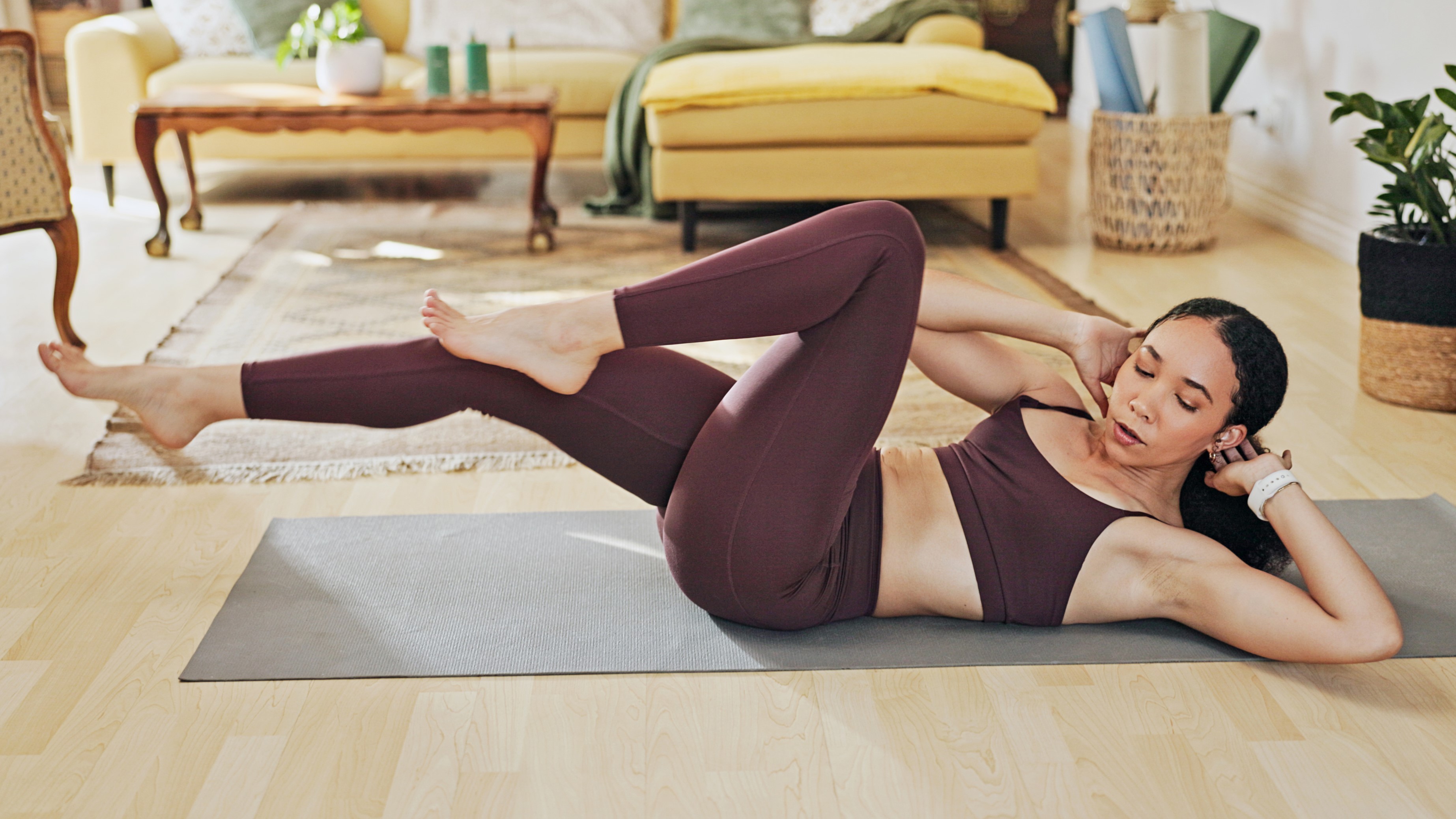I tried this 35-minute, low-impact Pilates workout to sculpt my legs and core — here’s what happened to my body
I felt this workout the next day

Who said a low-impact workout couldn’t leave your muscles aching the next day? In an attempt to re-build my core after giving birth to my son in January, I’ve added (sleep deprived) low-impact Pilates workouts to my routine. This full-body workout sculped my legs and core, without using any weights. Read on to find out how.
It goes without saying, it’s important to check with your doctor or midwife before taking on any new exercise routine after giving birth. I had an uncomplicated pregnancy and birth, and was able to start doing gentle Pilates workouts four weeks postpartum, but remember to listen to your body and be kind to yourself!
If you are looking for postpartum workouts, Pilates is a good place to start. There’s a focus on strengthening the pelvic floor — a collection of muscles that support the bowel, bladder and womb. The pelvic floor muscles stretch during pregnancy to accommodate your growing baby, so working on strengthening them once your baby is born is vital when it comes to improving your core strength and stability.
Pilates can also help heal diastasis Recti — the separation of the two sides of your six pack muscles during pregnancy. This is completely normal, but Pilates can help you start to engage your deep core muscles and strengthen your abdominals.
What is the workout?
Ready to get started? The workout is designed by Pilates instructor and physiotherapist, Lilly Sabri. It’s an intense, 35-minute low-impact workout that strengthens most of the major muscle groups in the body. All you’ll need is a Pilates ball, or a pillow if you don’t have one.
There are sixty different exercises in total, but Sabri talks you through each, so you can just pop your best workout headphones in and follow along with her. Here are a few of my favorites:
Pilates ball lunges: As the name suggests, this involves lunging with one foot elevated on a Pilates ball, adding some instability, and forcing your standing leg to work harder. To do this, place the ball under the heel of one foot, and press your body weight down into the ball. Step the other foot back, and lunge back until you have a 90-degree bend in your back leg. If you wobble, think about pushing your body weight down into the ball.
Sign up to get the BEST of Tom's Guide direct to your inbox.
Get instant access to breaking news, the hottest reviews, great deals and helpful tips.
Pilates ball glute bridges: Also in the leg section of this workout, this one really targets your glute muscles. To do a Pilates ball glute bridge, press both heels into the Pilates ball, engage your core, thinking about sucking your belly button into your spine, and your glutes to lift your hips up towards the ceiling. Pause here, then repeat. Here's more on how to do a glute bridge.
Pilates ball donkey kicks: For this exercise, start on all fours with your hands stacked underneath your shoulders and your knees underneath your hips. Place the Pilates ball behind your knee and squeeze your calves towards your glutes to keep the ball in place. From here, lift your foot up towards the ceiling, and then back to your starting position, keeping the pressure on the ball the entire time. Here's more on how to do a donkey kick.
Pilates ball toe taps: This one works on your core strength. Start by placing the ball behind your mid-back and lower back onto the ball. Place your fingertips beside your temples, and engage your core. From here, bend one leg and lift your knee up off the floor to the tabletop position. Slowly, lower it back to the ground and repeat on the other side. Keep alternating legs, moving slowly and with control.
I tried this 35-minute full-body, low-impact Pilates workout to sculpt my legs and core — here’s what happened
As mentioned above, at nine months postpartum, I’m still working on rebuilding my core strength—it took my body nine months to grow my baby and nine months to get back to how it was before my pregnancy. I’ve used Pilates pre- and post-partum to strengthen my core and pelvic floor muscles, and I've been running once or twice a week as part of my fitness routine.
That said, this workout really challenged me and forced me to work my deep core muscles. Using the Pilates ball increased the intensity of some of the leg exercises but also left me with that deep shake in my midsection that comes from a good workout. I also appreciated having the ball for the core section, as my lower back is still suffering from nine months of carrying and breastfeeding my baby, so relieving some of the pressure allowed me to target my core.
Of course, no workout would leave me with a six-pack, but I’ll definitely be adding this one to my home workout repertoire on days when my son decides to nap. Pilates is a good place to start if you are looking to build core strength.
More from Tom's Guide
- I tried the Pilates ‘rollover’ exercise to strengthen my abs and spine without weights — here’s what happened to my body
- No, not leg raises — here's the one abs exercise you should do to strengthen your deep core without weights
- 8 best core workouts to build stronger abs and boost your balance without weights

Jane McGuire is Tom's Guide's Fitness editor, which means she looks after everything fitness related - from running gear to yoga mats. An avid runner, Jane has tested and reviewed fitness products for the past five years, so knows what to look for when finding a good running watch or a pair of shorts with pockets big enough for your smartphone. When she's not pounding the pavements, you'll find Jane striding round the Surrey Hills, taking far too many photos of her puppy.

